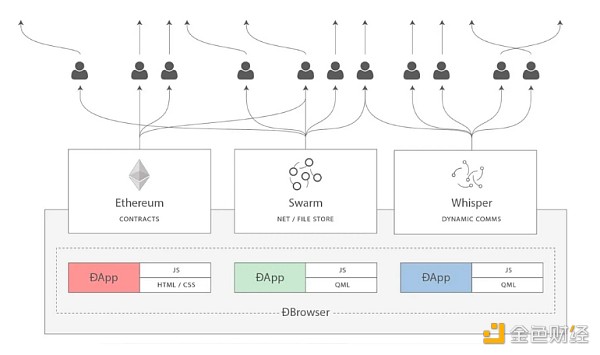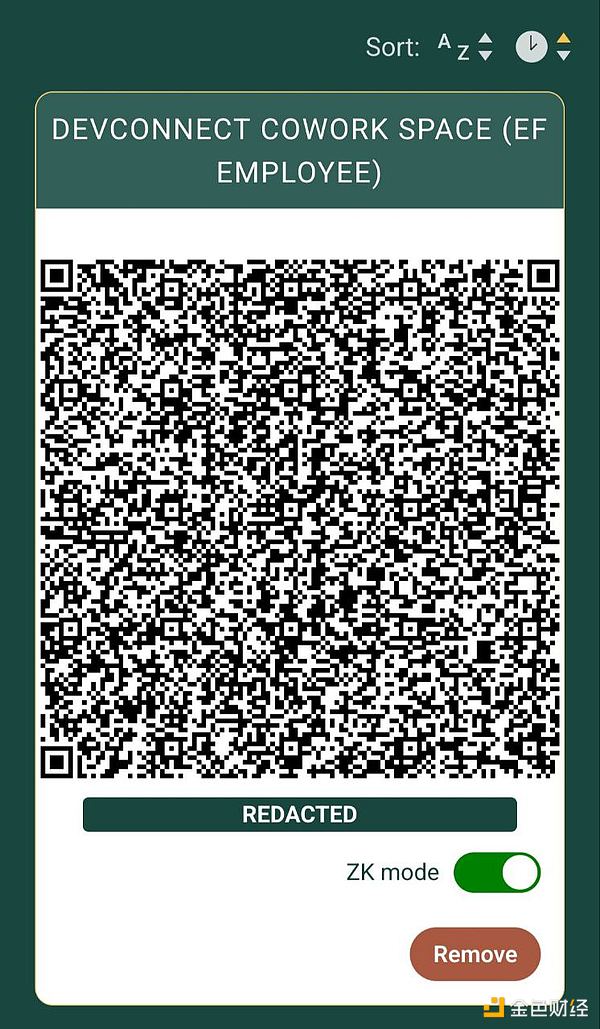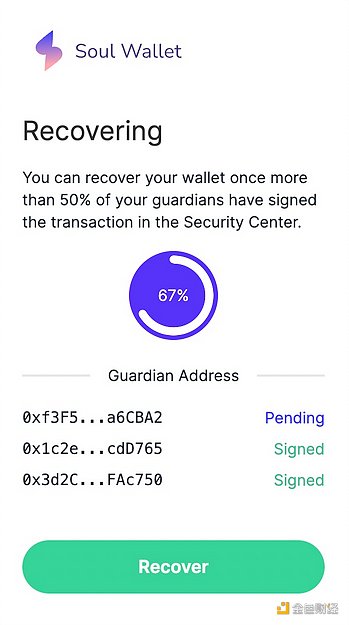Author: Vitalik, Source: Author's Blog; Compiler: Songxue, Golden Finance
One of my favorite memories from ten years ago was a pilgrimage to a place in Berlin known as the Bitcoin Zone ( Bitcoin Kiez: An area in Kreuzberg where there are about a dozen shops, a few hundred meters apart from each other, all accepting Bitcoin payments. The centerpiece of this neighborhood is Room 77, a restaurant and bar run by Joerg Platzer. In addition to simply accepting Bitcoin payments, it also serves as a community center frequented by various open source developers, political activists from across the political spectrum, and various other figures.

Two months ago A similar memory is of PorcFest (i.e. "porc," meaning "porcupine," aka "don't tread on me"), a gathering of libertarians in the woods of northern New Hampshire. The main way to get food there is from small pop-up restaurants with names like Revolution Coffee and Seditious Soups, Salads and Smoothies, which of course also accept Bitcoin. Here, discussing the deeper political significance of Bitcoin and using it in daily life are parallel.
The reason I bring up these memories is that they remind me of the deeper vision behind cryptocurrencies: We are here not just to create isolated tools and games, but to comprehensively build toward a more The direction of a free and open society and economy, in which the different parts – technological, social and economic – fit into each other.
The early vision of "web3" was also this type of vision, going in a different direction although idealistic. The term "web3" was originally coined by Ethereum co-founder Gavin Wood, and refers to a different way of thinking about what Ethereum is: unlike my initial view, which was "Bitcoin plus smart contracts," Gavin Think of it more broadly as one of a set of technologies that work together to build a more open base layer for the internet.

A diagram used by Gavin Wood in many of his early talks.
When the free and open source software movement began in the 1980s and 1990s, the software was simple: it ran on your computer and read and wrote files saved on your computer . But today, most of our important work is done collaboratively, often at scale. So even if the underlying code of an application is open and free, your data is routed through a centralized server operated by a company that may arbitrarily read your data, change the rules, or Cancel your platform qualification at any time. So if we hope to extend the spirit of open source software into today's world, we need to give programs access to a shared hard drive to store content that multiple people need to modify and access. Ethereum is related to similar peer-to-peer messaging technologies (then Whisper, now Waku) and decentralized file storage technologies (then just Swarm , and now IPFS) together constitute what? A public, decentralized shared hard drive. This was the original vision from which the now ubiquitous term "web3" was born.
Unfortunately, since around 2017, these visions have somewhat faded into the background. There is very little talk about consumer crypto payments, in fact the only non-financial application used on-chain at scale is ENS (Ethereum Name Service), and there is a larger presence in a significant part of the non-blockchain decentralized community. Ideologically divided, they see the crypto world as a distraction rather than a kindred spirit and powerful ally. In many countries, people do use cryptocurrencies to send and store funds, but they usually do so through centralized means: either through internal transfers on centralized exchange accounts or by trading USDT on Tron.

Background: Justin Sun, founder of Tron and decentralization pioneer, courageously leads the coolest and most decentralized crypto ecosystem in the world.
Having experienced that era, I believe that the fundamental reason for this change is the rise in transaction fees. When the cost of writing to the blockchain is $0.001, or even $0.1, you can imagine people creating all kinds of applications that take advantage of the blockchain, including non-financial aspects. But when transaction fees rise above $100, as they did at the peak of a booming market, there is only one audience willing to participate — and one that has actually become more willing to participate due to rising coin prices: avid gamblers. In moderation, avid gamblers can be okay, I've spoken to a lot of people at events who joined crypto for the money but stayed for the idea. But when they become the largest group using chains at scale, that adjusts public perception and the internal culture of the crypto space, and leads to many of the other negative things we’ve seen over the past few years.
Now, fast forward to 2023. We actually have a lot of positive news to show for it, both on the core challenge of scaling and on the various "side missions" that are critical to building a viable cypherpunk future:
Rollups (Rollup chain) began to really exist.
After the regulatory crackdown on Tornado Cash, privacy solutions experienced a temporary downturn with the resurgence of second-generation privacy solutions such as Railway and Nocturne.
Account abstraction begins.
Light clients, long forgotten, are starting to really exist.
Zero-knowledge proof, which is a technology that we thought would take decades to achieve, has now come out, is becoming more and more in line with the needs of developers, and is about to be used in consumer applications put into use in applications.
Two things: the growing recognition that lawless centralization and over-financialization are not what “crypto” is really about, and the fact that the key technologies mentioned above are finally starting to bear fruit, and together they are setting the stage for We offer an opportunity to take things in a different direction. That is, making at least part of the Ethereum ecosystem truly the permissionless, decentralized, censorship-resistant, open source ecosystem we originally built it to be.
What are some of these values?
Many of these values are shared not only by many in the Ethereum community, but also by other blockchain communities and even non-blockchain decentralized communities, although each community has its own unique the combination of these values and how much each community values them.
Open global participation:Anyone in the world Everyone should be able to participate as a user, observer or developer, on as equal a footing as possible. Participation should be permissionless.
Decentralization: Minimize the application’s dependence on any single participant. In particular, an app should be able to continue working even if its core developer disappears forever.
Censorship Resistance: Centralized actors should not have the power to interfere with the ability of any given user or application to operate. Concerns about bad actors should be addressed higher in the stack.
Auditability: Anyone should be able to verify the application’s logic and its ongoing operation (e.g. by running a full node) to ensure that it follows It works by the rules claimed by its developers.
Trusted Neutrality: The infrastructure should be neutral and in a way so that anyone can see that it is Neutral, even if they don't already trust the developer.
Build tools, not empires. Emperies seek to capture and trap users in closed gardens; while tools accomplish their tasks but interoperate with wider open ecosystems.
Sponsored Business Content
Collaborative mentality: Even while competing, projects within the ecosystem are working on shared software libraries, research, security, community building, etc. Cooperation, these aspects are of mutual value to them. The project attempts to achieve a positive-sum game, both with each other and with the wider world.
It is entirely possible to build something within the crypto ecosystem that is inconsistent with these values. It is possible to build a system that is called "Layer 2", but is actually a highly centralized system protected by multi-sig, with no plans to move to a more secure system. It is possible to build an account abstraction system that attempts to be "simpler" than ERC-4337, but at the cost of introducing trust assumptions that ultimately eliminate the possibility of a public memory pool and make it harder for new builders to join. It is possible to build an NFT ecosystem in which the contents of the NFT are unnecessarily stored on a centralized website, making it more fragile than storing these components on IPFS. A staking interface can be built that unnecessarily directs users towards what is already the largest staking pool.
Resisting these pressures is difficult, but if we don’t we risk losing the unique value of the crypto ecosystem and re-creating an existing web2 ecosystem with additional inefficiencies and extra steps clone.
Ethereum is a dark forest
Crypto is an unforgiving space in many ways. This point was vividly expressed in a 2021 article by Dan Robinson and Georgios Konstantiopoulos, which stated in the context of MEV that Ethereum is a dark forest where on-chain traders are constantly vulnerable to exploitation by front-running trading bots, which The bots themselves are also vulnerable to counter-exploitation by other bots, and so on. The same is true in other ways: smart contracts are frequently hacked, user wallets are frequently hacked, centralized exchanges are even more prone to failure, and so on.
This is a huge challenge for users in the field, but it also provides an opportunity: it means that we have a platform that can actually experiment, incubate and quickly get feedback on various security technologies. space to address these challenges. We've seen successful responses to challenges in a variety of settings:
Question
| Solution |
| Centralized exchanges were hacked | Use DEX plus stablecoins, so only trust a centralized entity to handle fiat currencies |
| Personal private key is not secure | Smart contract wallet: multi-signature, social recovery, etc. |
| Users were tricked into signing transactions and running out of funds | Wallets like Rabby display transactions to users Simulation results |
| Users were sandwiched by MEV players | Cowswap , Flashbots Protect, MEV Blocker... |
Everyone wants to be safe on the Internet. Some seek to secure the internet by promoting approaches that force reliance on a single specific actor, whether a company or government, who can serve as a centralized anchor of security and truth. But these practices sacrifice openness and freedom and contribute to the tragedy of a growing “fragmented web.” People in the crypto space place a high value on openness and freedom. The level of risk involved and the high financial stakes mean that the cryptocurrency space cannot afford to ignore security, but various ideological and structural reasons ensure that it cannot use centralized methods to achieve security. At the same time, the cryptocurrency space is at the forefront of very powerful technologies such as zero-knowledge proofs, formal verification, hardware-based key security, and on-chain social graphs. Together, these facts mean that, for cryptocurrencies, an open approach to improving security is the only way to go.
All of this is to say that the crypto world is a perfect experimental environment to apply its open and decentralized security approach to real-world high-stakes environments, and to make it mature enough to Some of these apply to the wider world. This is one of my visions of how the idealistic part and the chaotic part of the crypto world, and then the crypto world as a whole and the broader mainstream world, can turn their differences into symbiosis rather than constant tension.
Ethereum as part of a broader technology vision
In 2014, Gavin Wood introduced Ethereum As one of the set of tools that can be built, the others are Whisper (decentralized messaging) and Swarm (decentralized storage). The former has received attention, but with the shift towards financialization around 2017, insufficient attention has been paid to the latter. Despite this, Whisper lives on as Waku and is actively used by projects such as the decentralized messenger Status. Swarm is still under development, and now we also have IPFS, which is used to host and serve this blog.
In the past few years, with the rise of decentralized social media (Lens, Farcaster, etc.), we have had the opportunity to revisit these tools. Additionally, we have another very powerful new tool to join this holy trinity: zero-knowledge proofs. These technologies are most widely adopted as a way to improve Ethereum’s scalability, like ZK rollups, but they are also well suited for privacy. In particular, the programmability of zero-knowledge proofs means we can straddle the false binary choice of “anonymous but risky” versus “passed KYC and therefore secure”, while simultaneously enabling privacy and many kinds of authentication and verification.
An example in 2023 is Zupass. Zupass is a system based on zero-knowledge proof, incubated in Zuzalu, which is used for both on-site event authentication and online authentication to Zupoll voting system, Twitter-like Zucast, etc. The key feature of Zupass is that you can prove that you are a resident of Zuzalu without revealing which member of Zuzalu you are. Additionally, each Zuzalu resident can only generate one randomly generated cryptographic identity for each application instance they log into (e.g. a vote). Zupass was a huge success and was adopted for Devconnect’s ticket sales later that year.

The zero-knowledge proof proves that I, as an employee of the Ethereum Foundation, can access the Devconnect coworking space.
Perhaps the most practical application of Zupass so far is voting. A wide variety of polls have been conducted using Zupass as an anonymous voting platform, some involving politically controversial or highly personal topics where people felt a strong need to protect their privacy.
Here we can begin to see what an Ethereum-style cypherpunk world might look like on a technical level, at least purely technical. We can hold assets in the form of ETH and ERC20 tokens, as well as various NFTs, and use a privacy system based on stealth addresses and Privacy Pools technology that both protects privacy and excludes known bad actors from the same anonymous pool ability to benefit. Whether within our DAO or when helping decide on Ethereum protocol changes or achieving other goals, we can use a zero-knowledge voting system that can use a variety of credentials to help determine who is eligible to vote and who is not: In addition to voting using tokens as we did in 2017, we can also conduct anonymous voting for those who have contributed enough to the ecosystem and participated in enough events, or implement a one-person-one-vote system.
Face-to-face and online payments can be made super cheap on L2, taking advantage of data available space (or using Plasma protected off-chain data) and data compression, thereby providing users with ultra-high scalability. Payment from one Rollup to another Rollup can use decentralized protocols, such as UniswapX. Decentralized social media projects can use various storage layers to store activities such as posts, retweets, and likes, and use ENS (cheap on L2 with CCIP) as usernames. We can achieve seamless integration between on-chain tokens and off-chain proofs held by individuals with zero-knowledge proofs through systems like Zupass.
Mechanisms like quadratic voting, cross-tribe consensus finding, and prediction markets can help organizations and communities self-govern and maintain Information transparency, while blockchain and zero-knowledge proof-based identities can make these systems secure from centralized internal censorship and external coordinated manipulation. Sophisticated wallets can protect people as they participate in dapps, user interfaces can be published to IPFS and accessed as .eth domain names, hashes of HTML, JavaScript and all software dependencies are updated directly to the chain via a DAO superior. Smart contract wallets, designed to help people not lose millions of dollars in cryptocurrency, will expand to protect people’s “identity roots,” creating a more secure system than centralized identity providers like Sign In with Google.

Soul wallet recovery interface. I personally would now rather entrust my funds and identity to such a system than a centralized web2 recovery.
We can think of the larger Ethereum world (or "web3") as creating an independent technology protocol stack that is compatible with traditional centralized protocol stacks on all levels compete. Many people mix and match the two, and there are often clever ways to match the two: with ZKEmail, you can even use your email address as one of the guardians of your social recovery wallet! However, there are many synergies between using different parts of the decentralized protocol stack if they are designed to integrate better with each other.
< /tbody>
| Traditional stack | Decentralized stack |
| Banking system | ETH , stable currency, L2 payment, DEX (note: bank loan is still required) |
| receipt | Link to transaction on block explorer |
| Enterprise | DAOs |
| DNS (.com, .io, etc.) | ENS (.eth) |
| Normal email | Encrypted email (e.g. Skiff) |
| Regular messaging (e.g. Telegram) | Decentralized messaging (e.g. status) |
| Log in using Google, Twitter, and WeChat | Log in with Ethereum, Zupass, Proof via EAS, POAP, Zu-Stamps... + Social Recovery |
| Publish blogs on Medium, etc. | Publish a self-hosted blog on IPFS (such as using Fleek) |
| Twitter, Facebook | Lens, Farcaster... |
| Restrict bad actors with full view | Restrain bad actors through zero-knowledge proofs |
One of the benefits of thinking of it as a stack is that this fits well with Ethereum’s diverse ethos. Bitcoin is trying to solve one problem, or two or three at most. Ethereum, on the other hand, has many sub-communities with different focuses. There is no single dominant narrative. The goal of the stack is to enable this diversity, but at the same time strive to enhance interoperability across this diversity.
Social Layer
It’s easy to say “these people who do Y people are the real deal”. But this is a lazy response. To truly succeed, we not only need a vision for the technology stack, but also the social part of the stack that enables the technology stack to be built in the first place.
In principle, the strength of the Ethereum community is that we take incentives seriously. PGP wanted to put encryption keys into everyone's hands so we could actually sign and encrypt emails for a few decades, but it basically failed, but then we had cryptocurrencies and suddenly millions of people Now that we have the keys publicly associated with them, we can start using them. Of course it has other purposes too - including a return to encrypted email and messaging. Non-blockchain decentralized projects are often chronically underfunded, and a blockchain-based project received $50 million in Series B funding. We got people to invest ETH to secure the Ethereum network, not out of the benevolence of the stakeholders, but out of their own self-interest—and we gained $20 billion in economic security as a result.
At the same time, incentives are not enough. DeFi projects often start out humble, collaborative, and as open source as possible, but sometimes abandon these ideals as they scale. We can incentivize stakers to participate with very high uptime, but it is more difficult to incentivize stakers to achieve decentralization. It may not be possible at all through purely protocol means. Many of the key components of the “decentralized stack” described above do not have viable business models. The governance of the Ethereum protocol itself is inherently non-financial - making it more powerful than other ecosystems whose governance is more financial. This is why Ethereum needs a strong social layer that actively emphasizes its values where pure incentives cannot reach - but without creating the concept of "Ethereum consensus" that will evolve into a new Form of political correctness.
A balance needs to be found between these two aspects, although the correct term is not balance but integration. There are many people who first came into crypto because they wanted to get rich, but then became familiar with the ecosystem and became active believers in building a more open and decentralized world.
How do we achieve this integration? This is the key question, and I think the answer lies not in one magic bullet, but in a series of technological approaches that may be arrived at iteratively. The Ethereum ecosystem has been more successful than most in encouraging a collaborative mentality among Layer 2 projects through social means. Large-scale public goods funding, especially Gitcoin Grants and Optimism’s RetroPGF round, is also very helpful as it provides another revenue channel for developers who don’t see any regular business models that don’t require Make sacrifices on your values. But even though these tools are still in their infancy, there is still a long way to go to improve these specific tools, and to find and develop other tools that may be better suited to specific problems.
This is where I see the unique value proposition of the Ethereum social layer. While valuing motivation, there is a unique way to not be consumed by it. While valuing warm and cohesive communities, also remember that what feels "warm and cohesive" from the inside can easily feel "oppressive and exclusive" from the outside, and value hard norms of neutrality, open source, and resistance to censorship, as Ways to guard against the risks of overemphasis on community-driven development. If this hybrid approach works successfully, it will be in the best position to realize its vision on both an economic and technological level.
 JinseFinance
JinseFinance
 JinseFinance
JinseFinance ZeZheng
ZeZheng JinseFinance
JinseFinance JinseFinance
JinseFinance JinseFinance
JinseFinance JinseFinance
JinseFinance Catherine
Catherine Bankless
Bankless Cointelegraph
Cointelegraph Bitcoinist
Bitcoinist